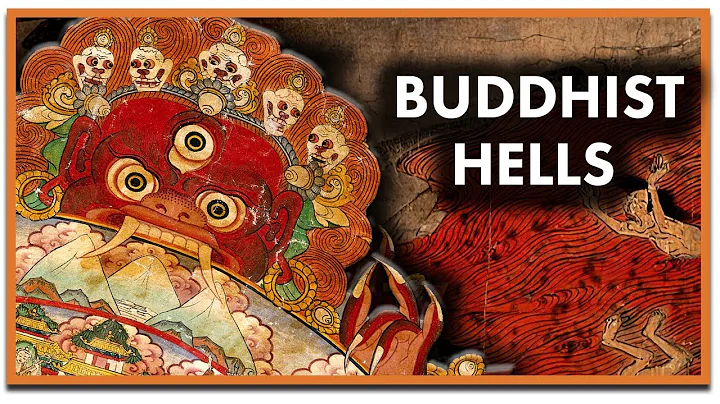
Is there any Bodhi in the plant world on earth? Is there anyone like Sakyamuni in the world? More than 1,300 years ago, the four verses of an illiterate wise man in our country made the above problems a fog shrouded in the hearts of many mortals.

"There is no tree in Bodhi, and the mirror is not a platform." This is one of the four famous verses of Master Huineng, the Zen , the Sixth Patriarch of my country's Buddhist Zen . Bodhi has no trees, and a bright mirror is not a platform. There is nothing originally, so where can dust be caused? Master Huineng, the Sixth Patriarch of Zen, intended to teach people not to delusion and attachment, so that they can understand their minds and see their nature and attain Bodhi by themselves.

Is there any Bodhi tree in the plant world on earth? There are bodhi trees in the plant world, and there is a Bodhi tree planted by Sakyamuni's "holy tree" in the tropical greenhouse of the National Botanical Garden in Beijing, my country. This greenhouse is named "Bodhi Room". This Bodhi tree in the Bodhi room of the National Bodhi Garden (South Garden) is also the only Bodhi tree in China that was planted from the holy tree where the Buddha sat meditated.

The Bodhi chamber in the South Garden of the National Botanical Garden is named after the planting of a precious Bodhi tree. Bodhi tree is a tall tree distributed in South and Southeast Asia. It is not unusual, but the Bodhi tree planted in the Bodhi room of the National Bodhi Garden was formed by reproduction from the Bodhi tree that Buddha Shakyamuni was meditating and at that time. Planted around the Bodhi tree are Fang Shulan and frangipani , which also have a deep connection with Buddhism.

1954, 10 young scientists from the Institute of Botany, Chinese Academy of Sciences wrote a letter to Committee Member Mao, proposing suggestions on building a national-level Beijing Botanical Garden . In 1956, the state allocated 5.6 million yuan for land requisition, planning and construction, plant introduction and other work. The South Garden of the National Botanical Garden is managed by the Institute of Botanical Research, Chinese Academy of Sciences, and the North Garden is managed by the Beijing Municipal Garden Bureau. The National Botanical Garden is a comprehensive institution integrating plant diversity research, resource protection and utilization, scientific communication and other functions, representing the highest level of national plant scientific research and extant protection.

National Botanical Garden is a symbol of national ecological civilization, the "Noah's Ark" for conserving endangered plants in my country, and a reserve library for strategic biological resources. The National Botanical Garden has collected more than 15,000 species of museums (including varieties), including nearly 1,000 rare and endangered plants (including species in the CITES Appendix); 6 national flower germplasm resource libraries have been built (peony, water lily , lilac , lilac , hosta , begonia and wild ferns).

National Museum has built the largest plant specimen museum (PE) in Asia, with 2.87 million samples, 80,000 seed samples and 70,000 fossil specimens; 46,000 DNA samples are preserved and 258,000 samples are strongly supported in my country's biodiversity research, resource protection and utilization.

Many people think that Sakyamuni is just a virtual character in myths and legends. There is really a person named Sakyamuni in the world, who is also a prince. 2500 years ago, Siddhartha Gautama, the prince of , Kapilava (now in Nepal), of the ancient Indian , became a monk and practiced, and achieved great enlightenment under the Bodhi tree. founded Buddhism that promotes the equality of all beings. Therefore, Buddhism regards Bodhi tree as a "holy tree" and India is designated as a national tree. "Sakyamuni" is a Buddhist honorific title for Siddhartha Gautama, which means the hermit of the Shakyamuni tribe .

Eastern Han Han Mingdi sent people to Western Regions to seek Buddhism, and created the first Buddhist temple in China in Luoyang . Dong Taizong During the Zhenguan period, the Sixth Patriarch of Zen Buddhism, Master Huineng wrote four verses about the Bodhi tree, which were widely circulated. It is said that Master Huineng, the Sixth Patriarch of Zen, himself illiterate. Master Huineng believes that "there is no outside the mind" and "there is no Buddha outside the mind". Everyone's mind and nature are the Buddha's heart. Becoming a Buddha only depends on one's own realization. The difference between Buddha and sentient beings is only in one enlightenment, while the difference between confusion and enlightenment is only in one thought. (Photography by Wang Jian'an)







![[English] Who Am I - Lecture 1 - Ven. Guan Cheng - DayDayNews](https://i.ytimg.com/vi/KU0fUs2It5o/hq720.jpg?sqp=-oaymwEcCNAFEJQDSFXyq4qpAw4IARUAAIhCGAFwAcABBg==&rs=AOn4CLDFpQUN_QwRfC7bmP4sUadq-RcYdg)
![A Moving Masterpiece 清明上河图 [English narration] - DayDayNews](https://i.ytimg.com/vi/kxff-4GktOI/hqdefault.jpg?sqp=-oaymwEcCOADEI4CSFXyq4qpAw4IARUAAIhCGAFwAcABBg==&rs=AOn4CLBtHGLeUpJNCYDJYnZTuISQ1N5Vag)


